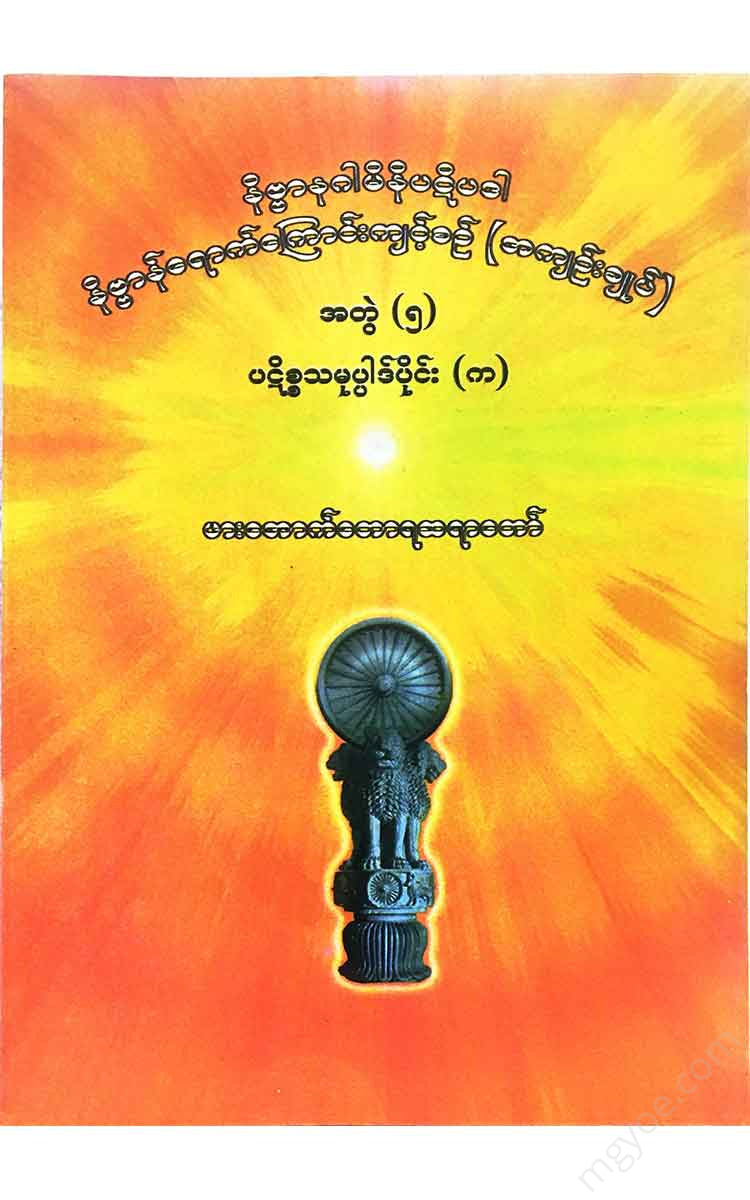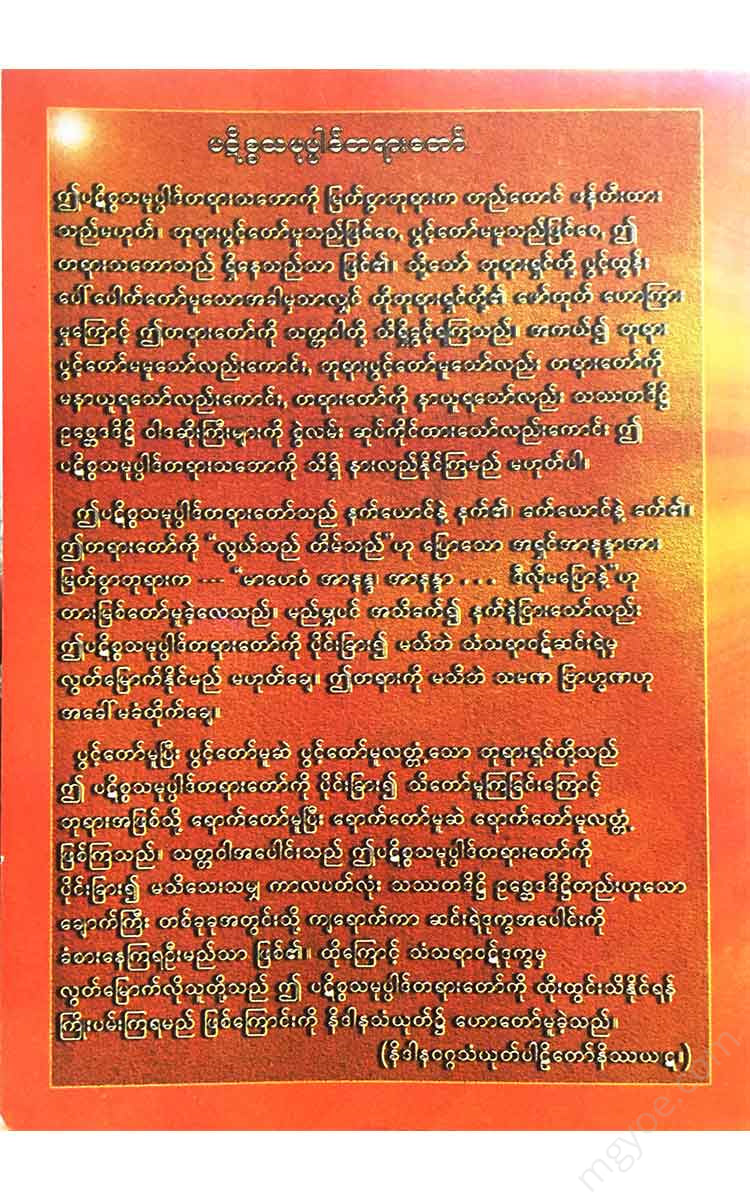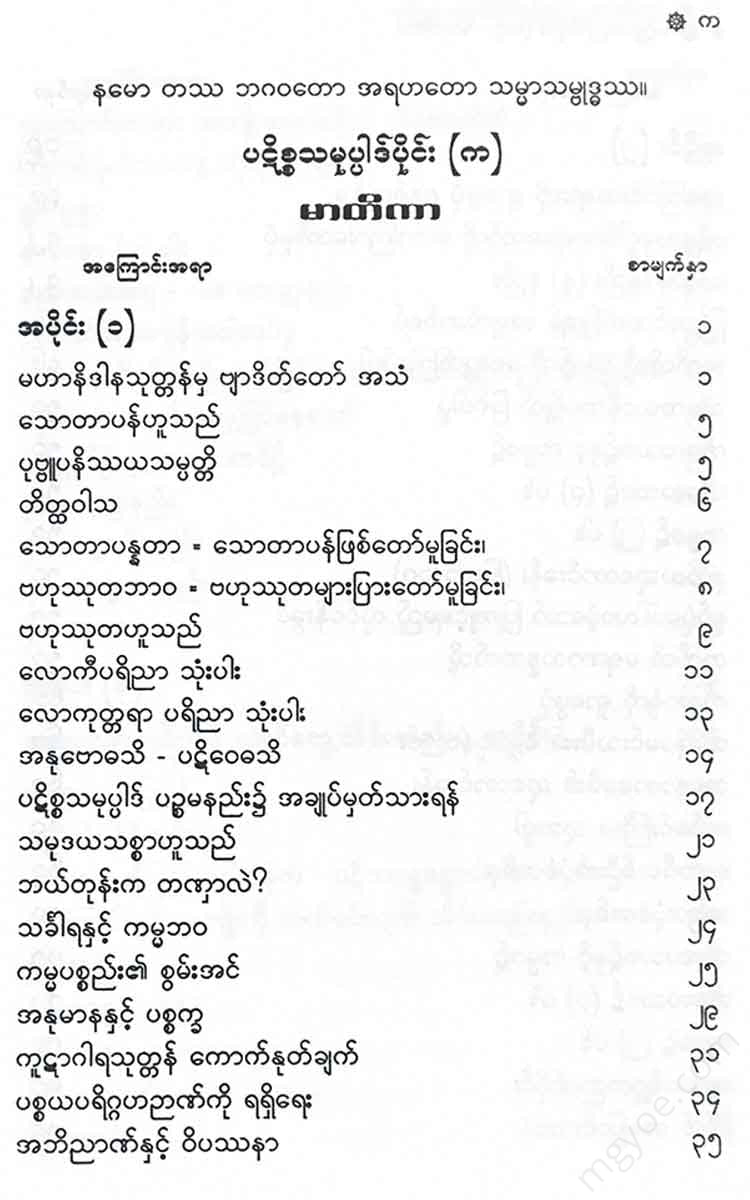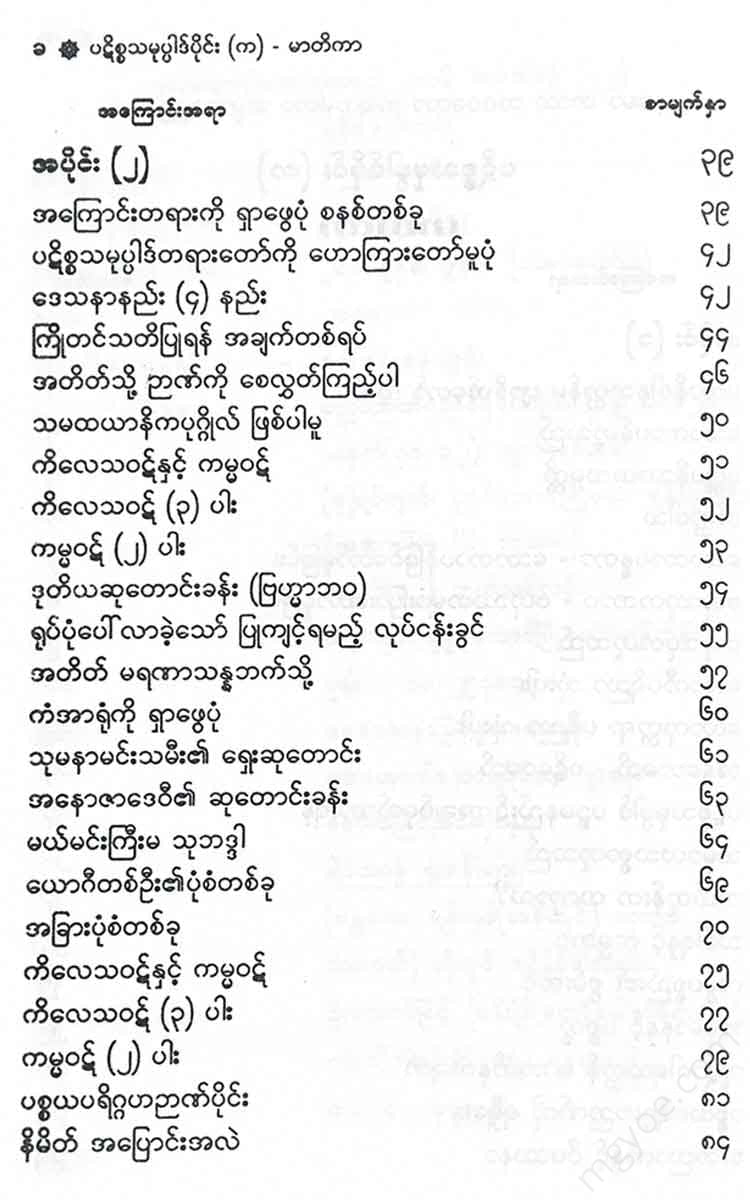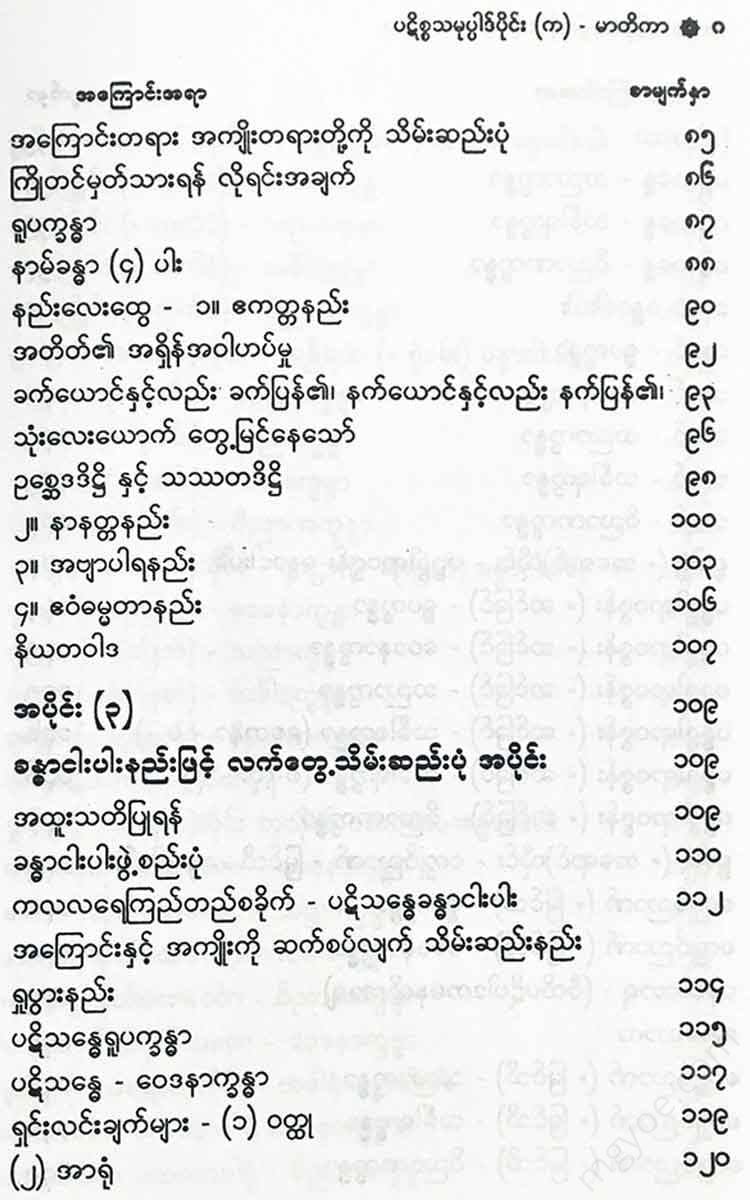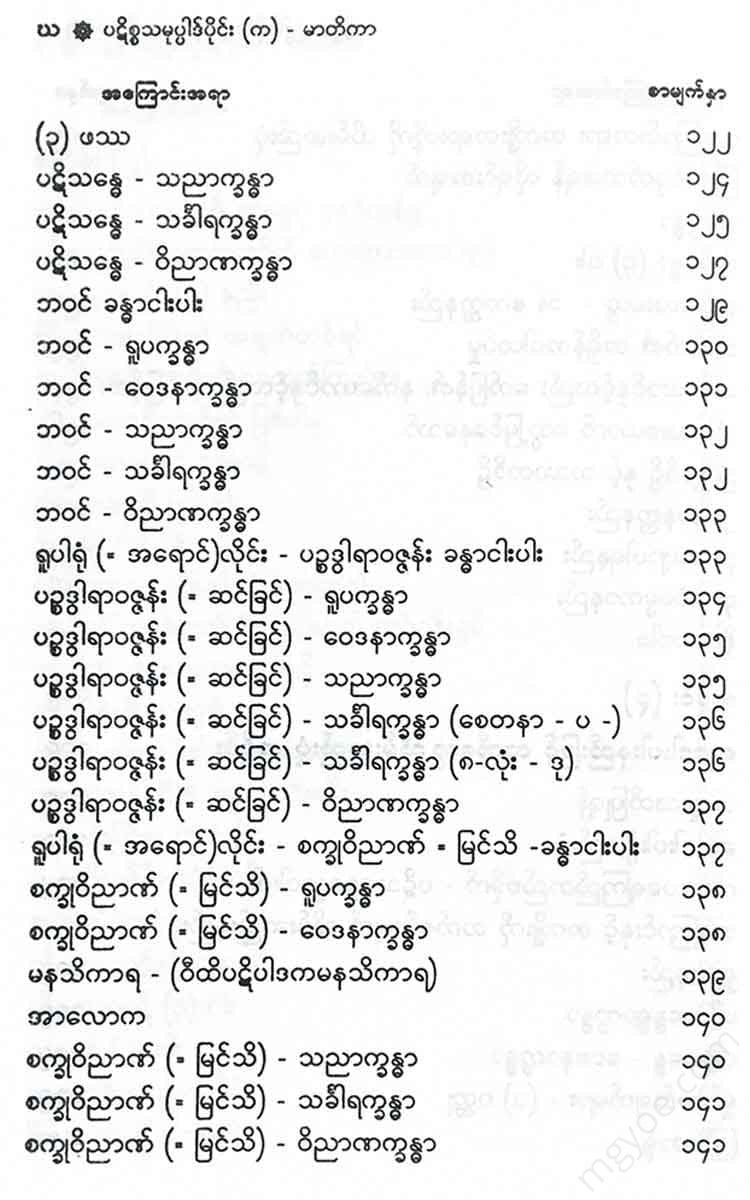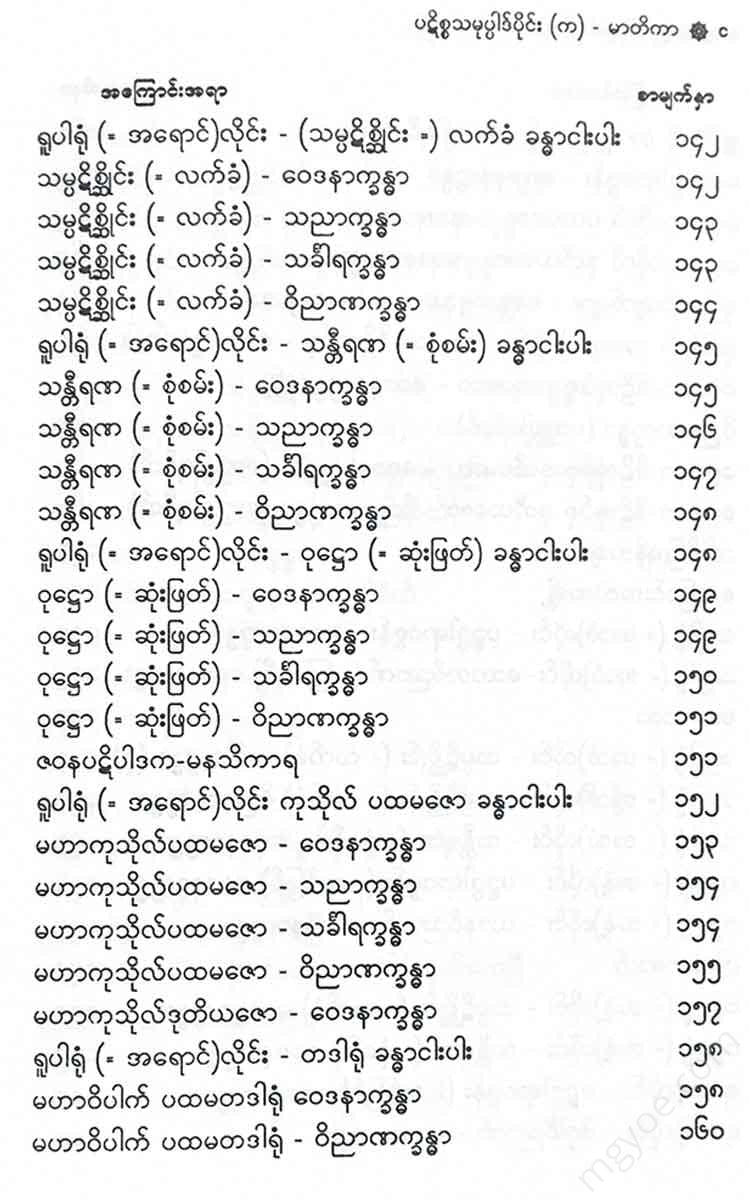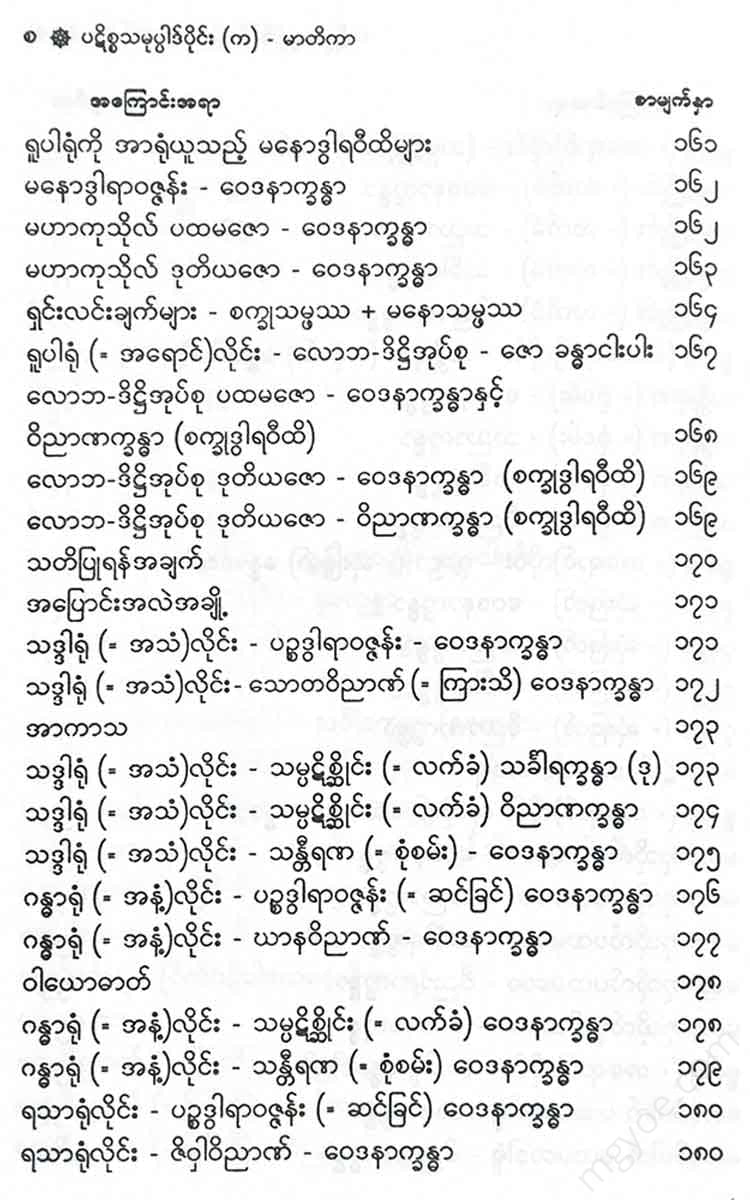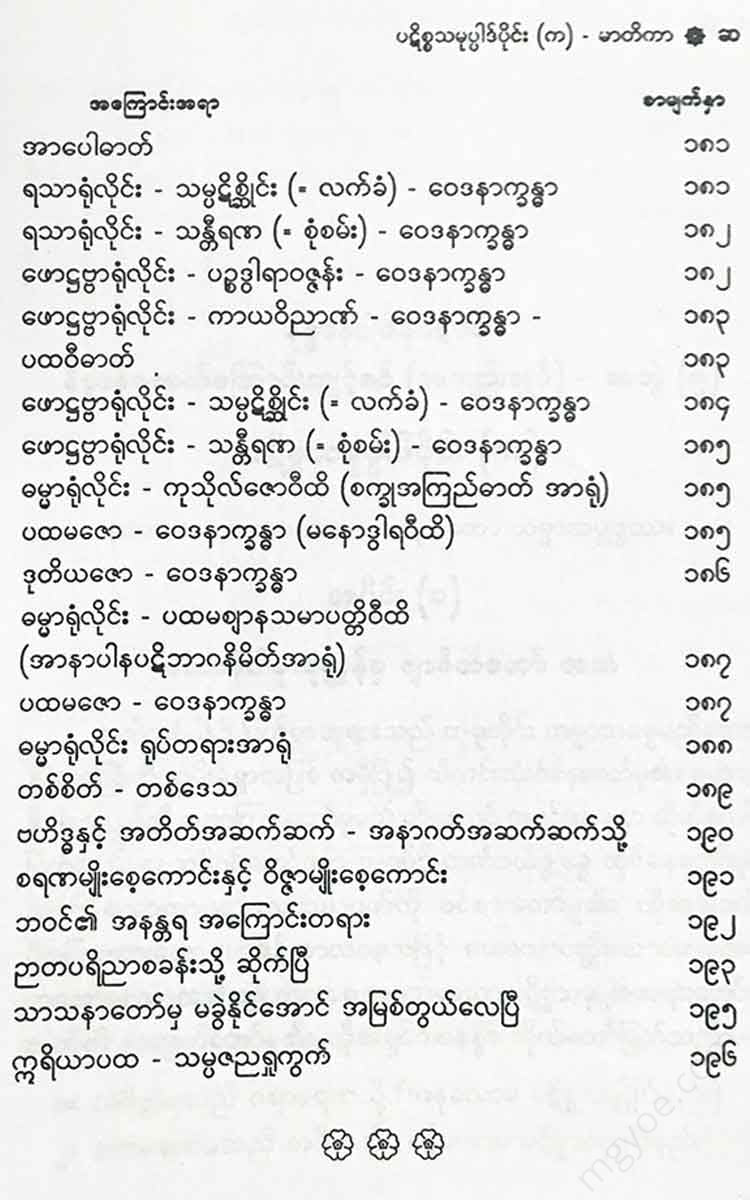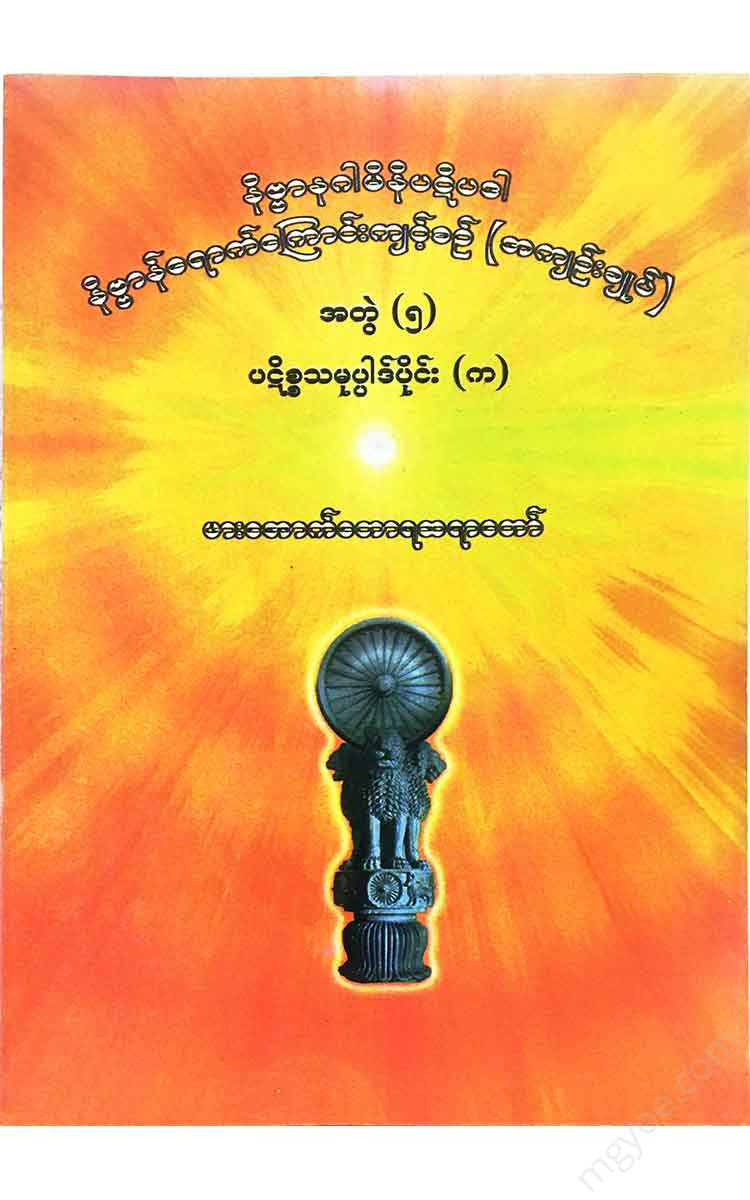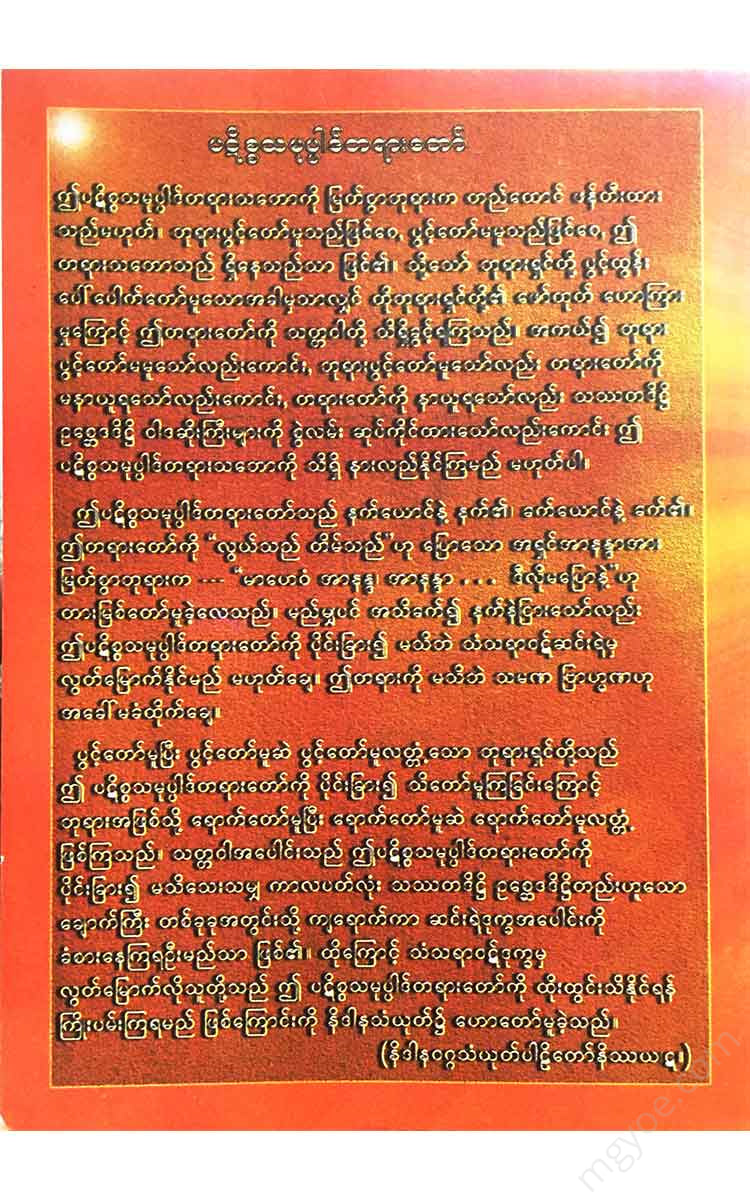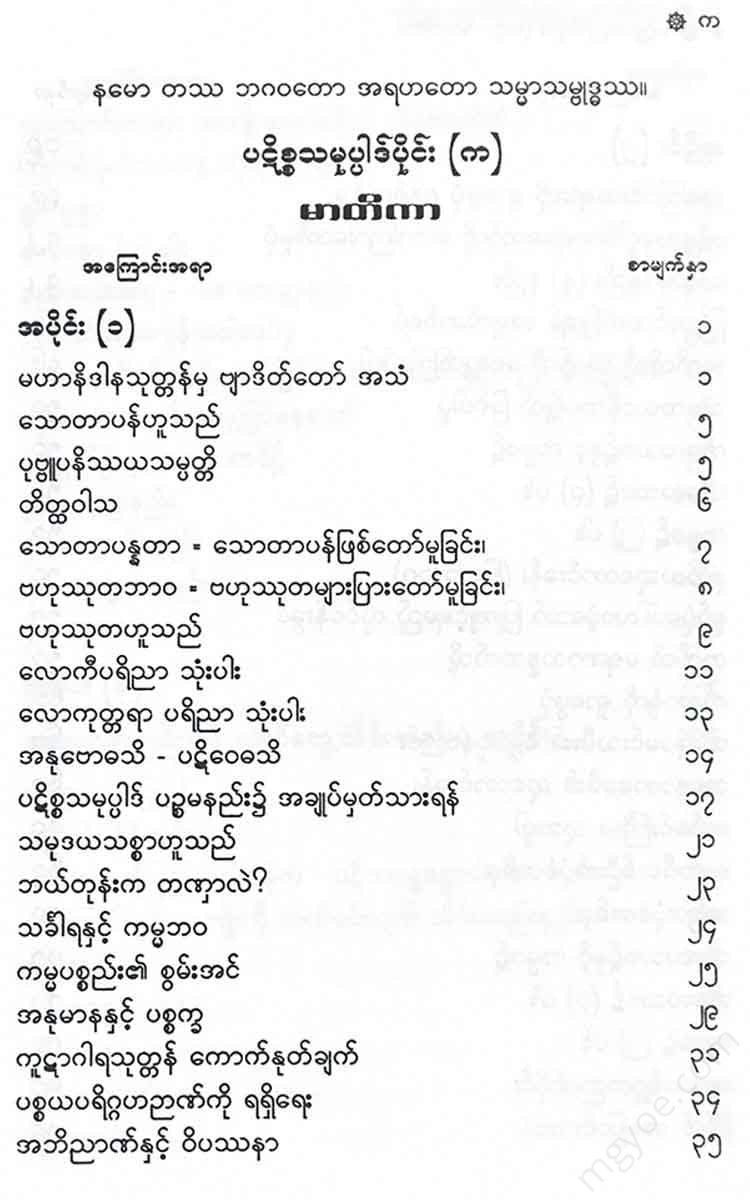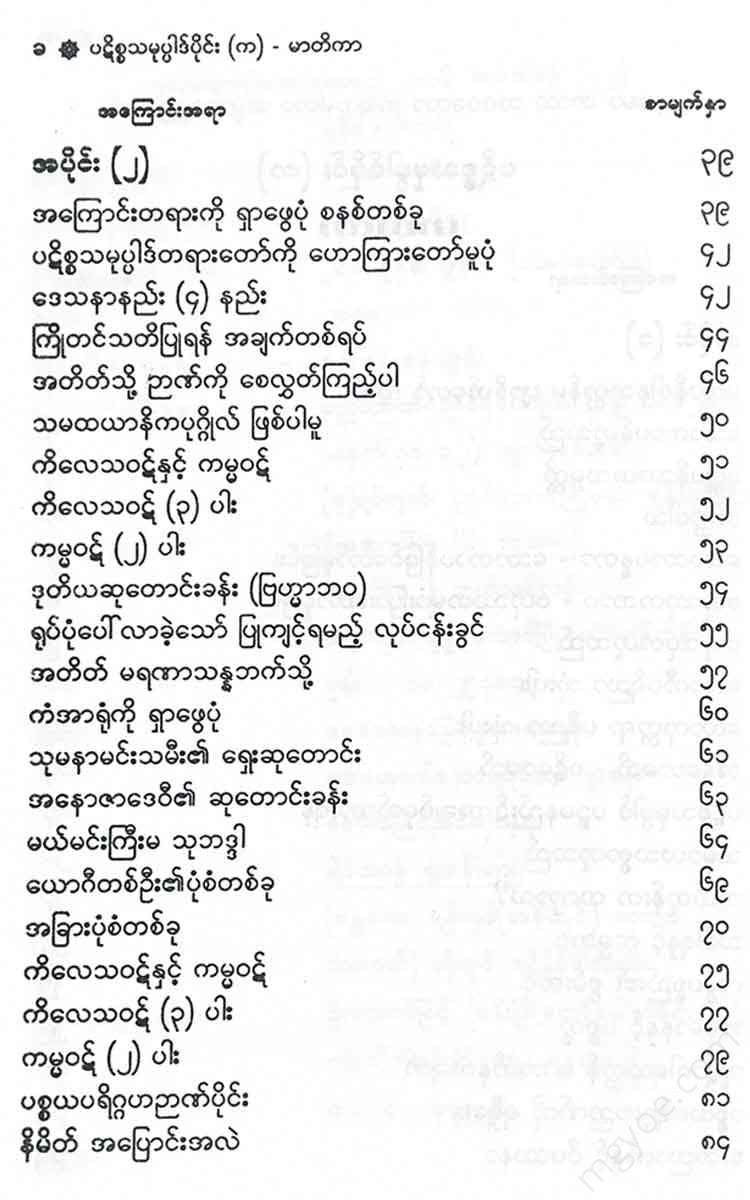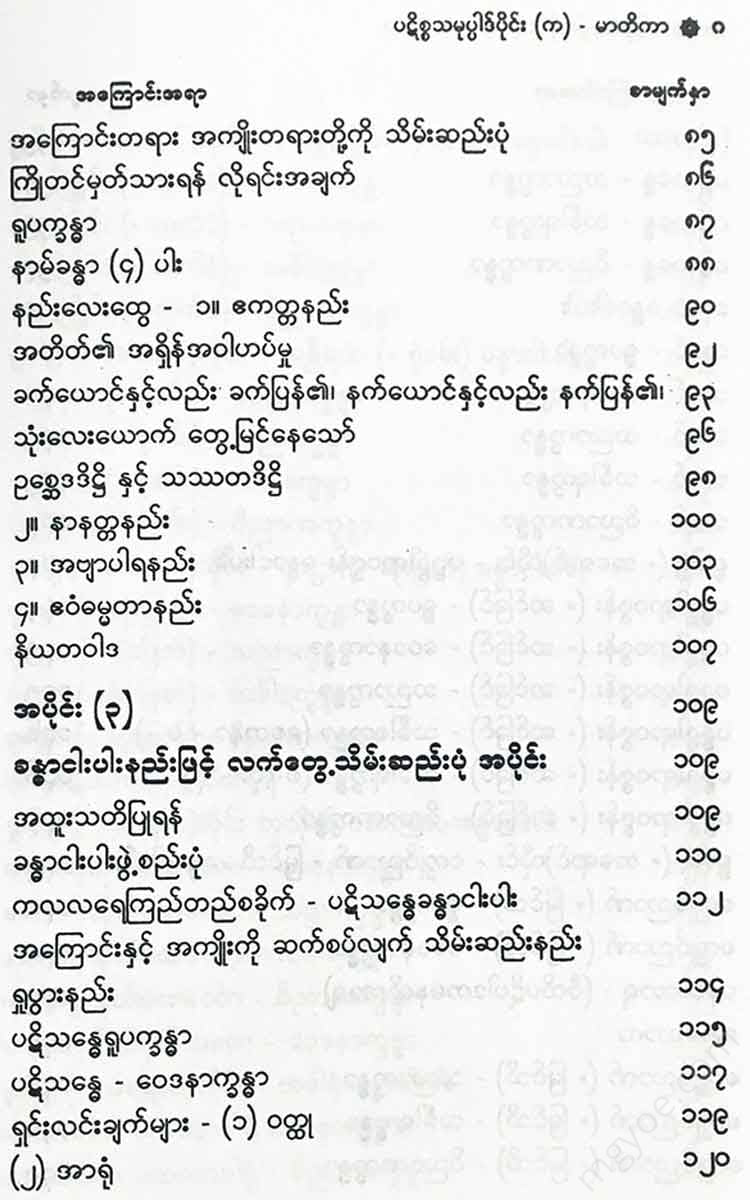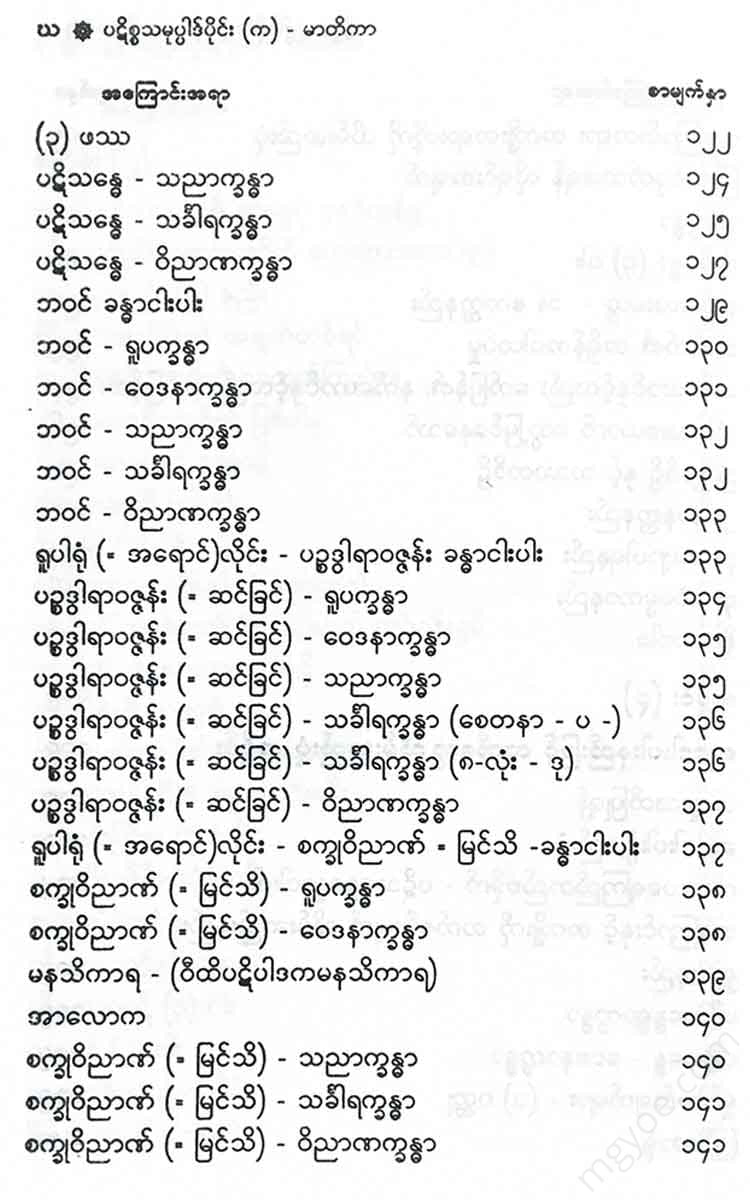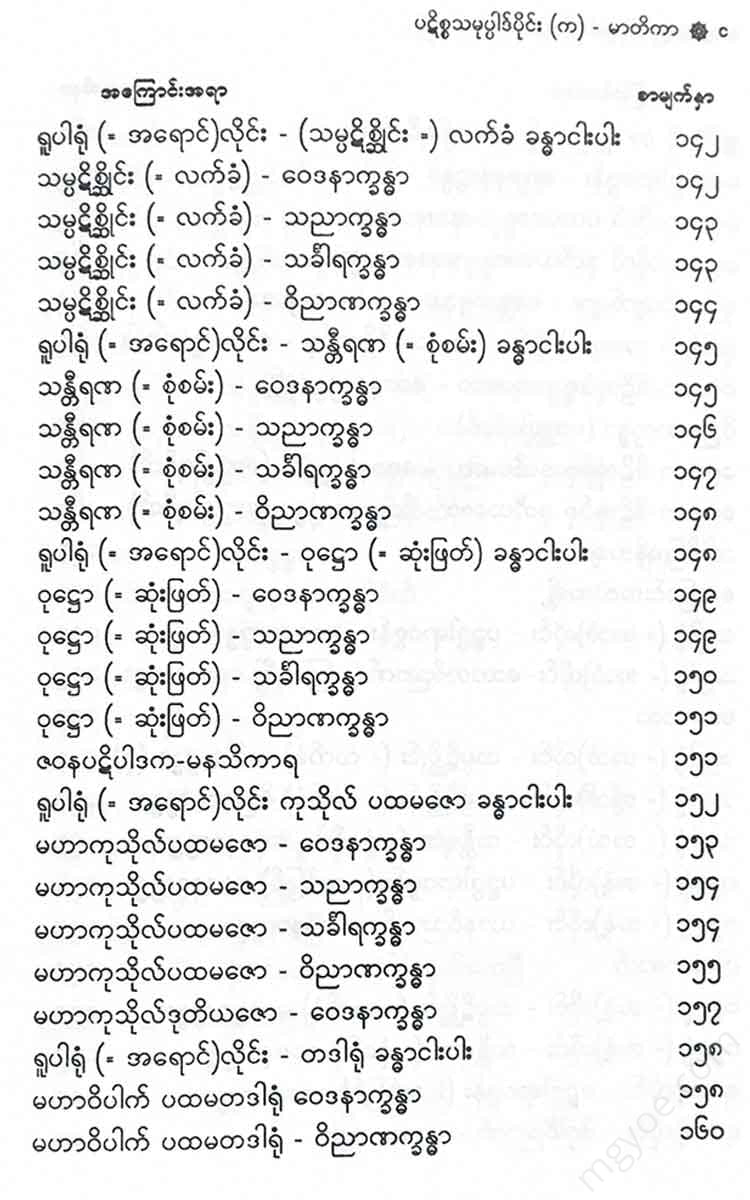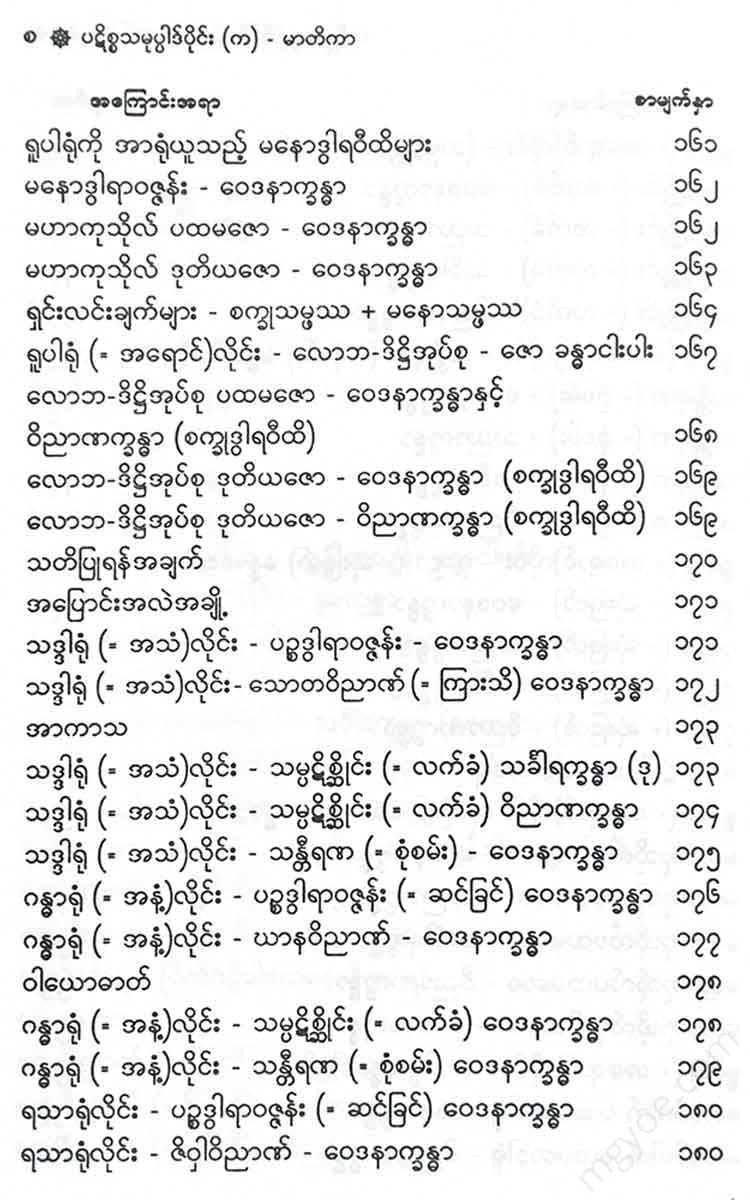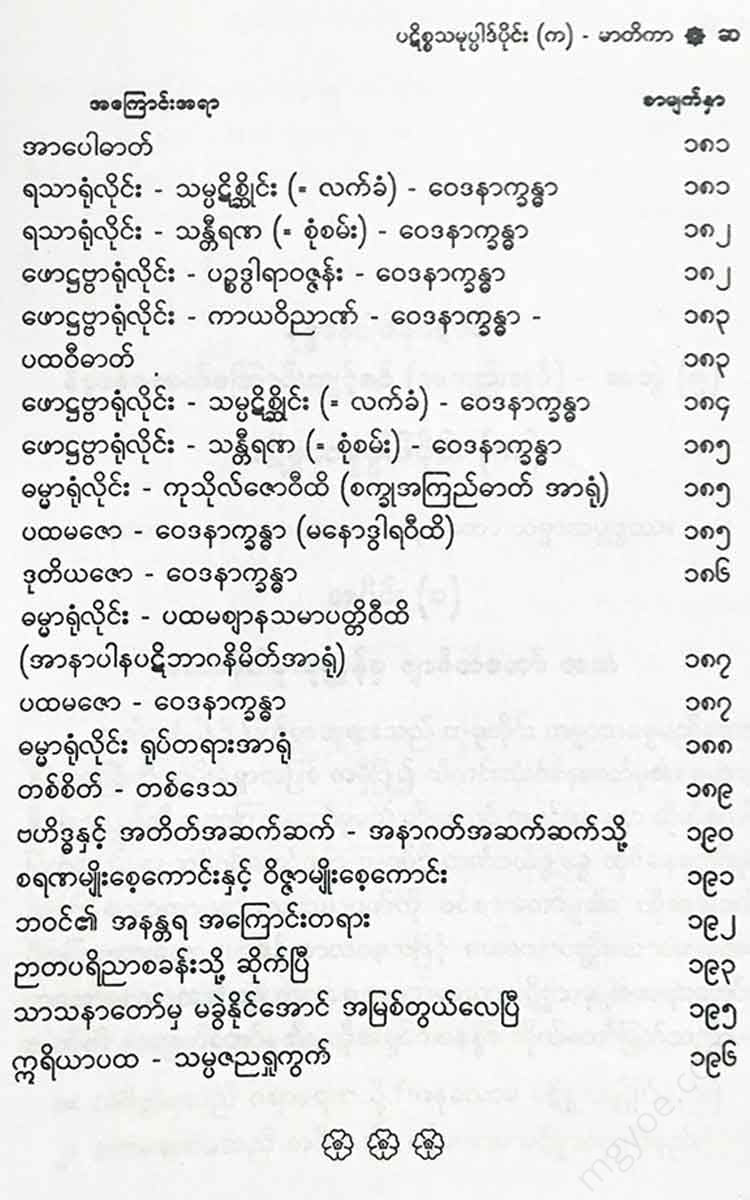Other Websites
Venerable Phor Aok Tora Sayadaw - The Practice of Attaining Nibbana (Summary) Volume (5)
Venerable Phor Aok Tora Sayadaw - The Practice of Attaining Nibbana (Summary) Volume (5)
Couldn't load pickup availability
Part (1)
The sound of the revelation from the Maha Nidana Sutta
At one time the Blessed One was residing in the great village of Nigon in the Kuru region, called Kammasadhamma, as a village for alms. On the day on which he was to preach the Great Nidana Sutta, the Venerable Ananda, sitting cross-legged in the place where he had purified himself for the day, entered upon the Sotāpattipala Samaṃsamapa
1. From ignorance to old age and death (Anuloma Patissa Samuppada)
2. From birth and death to ignorance (the path to the path of existence)
3. From the two ends to the middle (Anuloma Patiloma Patissamuppada method)
4. From the middle to the two ends (Anuloma Patiloma Patissamuppada)
Having thus meditated on the three (12) elements of the path of conflict, he meditated on them three times, one after the other. Having meditated on them in this way, the concept of the cause-effect relationship of the path of conflict, called pasyakara, seemed to him to be clearly evident. He narrated this incident and presented it to the Blessed One, hoping that he would be given the opportunity to hear a good piece of Dhamma. In the evening, he approached the Blessed One, paid homage to the Blessed One, and, sitting down, spoke to the Blessed One in this way.
“The Buddha, whose glory is radiant and radiant, is wonderful, the Buddha, who has never been
Then the Buddha preached the Maha Nidana Sutta to the Venerable Ananda. The following is an excerpt from that sutta.
Maha Hegam Ananda Avasa, Maha Hevam Ananda A08. Gambira Sayam Ananda Patissasamuppadao Gambira Baso Sa, Etassa Ananda Dhammasa Ananubhodha Appattivedha Evamaya Paja Tantakulakajata Kulagandikajata Munsapavajabhuta Apayam Duggati" Vinipada Sansaram Nativattati.
Anunubodhāti yātaparīnyāvāsena ananubhujjāna. Apatīvedhāti tirānapahanaparīnyāvāsena apatīvijjāna. (D., 285.)
Ananda... Do not say this, Ananda... Do not say this. This cause-effect relationship - the doctrine of the cessation of conflict - is profound. Because it is profound, it also has a profound form. Ananda • • That cause-effect relationship - the doctrine of the cessation of conflict -
1. Intellectual knowledge,
2. Tirana Parinya,
3. The worldview
Because they do not know how to penetrate properly with the three kinds of knowledge, because they do not know how to carve out the path, because they do not know how to cut through the obstacles, all these beings, in this long journey of samsara, are like a tangled thread, like a tangled bundle of leaves, like a white-haired grass, and are trapped by evildoers, without desire, disorganized, and destroyed, unable to transcend the cycle of suffering and the cycle of happiness that remains after the cycle.
(This, 2, 47.)
Referring to this same sermon, the great scholars of the Eighth Canon also made the following decision.
The wisdom of the mind, the concentration of the mind, the knowledge
The eternal life is the eternal life of the world.
The forest of Sansara Bayamati, the river of Supinanta,
(Abhi, Vishnu, 2, 189. Visuddhi, 2, 221.)
With the sword of wisdom, which is sharpened better than a jade on the great stone of samadhi, he constantly torments and tortures beings like a whirlwind of thunder.
There has never been anyone, not even in a dream, who has been able to break the cycle of cause and effect, the cycle of samsara, and overcome the great suffering of samsara. (Abhi, 2, 189. Visuddhi, 2, 221.)
In accordance with the above Pali Atthakatha, a good disciple who desires the true Dhamma, the bliss of Nibbana, and the great Dhamma, who has a strong desire to attain the supreme Dhamma, must strive to understand the concepts of cause and effect, relationship, and conflict separately and distinctly through the three types of knowledge: the knowledge of the mind, the knowledge of the senses, and the knowledge of the senses. Since he does not know this many times through the knowledge of the mind, he cannot overcome the cycle of existence until he attains the path through the knowledge of the senses. Therefore, the Buddha himself has said that he cannot overcome the cycle of existence because he does not know it himself. Therefore, he must strive to understand it fully through the knowledge of the mind, the knowledge of the senses, and the knowledge of the senses. Understand that this is not a field where you have to work hard to understand things by guessing, nor is it a field where you have to just listen to what the teacher says.
What is Esophang?
The question arises, why is this concept of cause-effect relationship, which is so deep and so difficult, so difficult and so difficult, so clear and so obvious in the mind of the Venerable Ananda? The answer is as follows.
(Therassa hi satuhi karanehi gambiroa patissasamuppadao uttananoti upatthati, katamehi satuhi, pubbu panissaya pratya, taithvatsane, sota pannataya, jyotanyabhavenati. (D., 278)
This concept of causality, which is deep and deep, difficult and difficult, appears to the Venerable Ananda as if it were manifest and exists in his consciousness due to four reasons. What are the four reasons?
1. Pubbhu Panissaya Sampatti = The attainment of the
(Complete with all the virtues,
2. Tithvatasa = Always seek the great harbors of the Dharma.
Constant devotion,
3. Sotapannata = becoming Sotapan,
4. Nature of knowledge = abundance of knowledge,
Because of these (4) reasons, this dark and dark, dark and difficult,
The concept of causality, the origin of conflict, is in the mind of the Venerable Ananda.
It exists as if it were obvious.
1. Pubbu Panissaya Sampatti = Venerable Ananda, starting from the teachings of Padumuttara Buddha, completed the perfections of the five worlds and attained the five-fold title of the five-fold title. Therefore, Venerable Ananda, in his inner being, all the perfections that he had completed and attained in many past lives, aiming for the great ascetic enlightenment that would enable him to attain the five-fold title of the five-fold title, were also perfected. This is also a reason.
2. Tittavasa = The great harbors leading to Nibbana are called the Taitavas. In the Dhamma, the Buddha and the great ascetics of Aggasavaka, who systematically guide the way to Nibbana, are like great harbors for crossing to the other shore, Nibbana, and therefore they are called Tittavas. Approaching and staying with teachers who have received the name Tittavasa is called Tittavasa. Venerable Ananda himself is also endowed with the honor of Tittavasa. Venerable Ananda, whether you go to the Buddha, to the Venerable Sariputta, Venerable Mahamoggallana, Venerable Mahakotika, Venerable Mahapunna, etc., in the presence of these great teachers -
(a) Uggahana = learning the Pali scriptures,
(b) Savanah = hearing the interpretation of the Pali text (Atthakatha = Eighth Katha),
(c) Paripussana = understanding difficult matters such as rules and regulations
Meaning: Asking again about the Atthakatha (- Atthakatha),
(d) Dharana = the Pali Canon and the eighth interpretation of the Pali Canon.
Keeping the Katha in mind* and speaking it with your mouth,
Thus, he systematically studied these eight Pali discourses on the subject of the origin of conflict. He brought them up to be spoken. For this reason, Venerable Ananda, in the knowledge of the Blessed One, this concept of the origin of conflict, which is both profound and profound, difficult and difficult, exists as clearly as it is clear. (D., Htt., 2, 83.)
3. Sotapanna = Being Sotapanna,
The name of the sotāpanna is pisyakara, and the name of the ukkānakava is upāpatthāti, ayāusa ayāsāma sotāpanna. (D., 283.)
Sotapanna Niññā. Upāti tatthā sammohā vijīsāna, “Yam kīu samudayā dhammam, sam tā nirodha dhammamanti attapika sakkhavasāne Ṣapādhānā.” (Dī, Kṛti, 284.)
The Sotāpaṇa is true, and in the minds of the Sotāpaṇas, the concept of cause and effect, the relationship between cause and effect, the cessation of conflict, known as the Pasyakara, is clearly evident and exists. Because the ignorance that often obscures the concept of cause and effect, known as the Samudāya Truth, the relationship between cause and effect, the cessation of conflict, known as the Samudāya Truth, has been completely destroyed and eliminated by the knowledge of the Sotāpaṇa path, and because it has been clearly seen by the mind that all Samudāya dhammas are only the cessation of conflict, it has been completely destroyed and eliminated by the knowledge of the Sotāpaṇa path, and by the power of the knowledge that it has been clearly seen by the mind that all Samudāya dhammas are the cessation of conflict, and that it has been completely destroyed and eliminated by the knowledge of the Sotāpaṇa path, and by the power of the knowledge that it has been clearly seen by the mind that all Samudāya dhammas are the cessation of conflict, and that it has been completely destroyed and eliminated by the knowledge of the Sotāpaṇa path, known as the Samudāya dhammas
